|
I have spent this weekend’s radio time tying down the remote rig set up and I even had my first QSO on 2m SSB over the system today with G1EUC. He couldn’t tell that I was not using a traditional set up, which is really positive. After that I took some more time to add the AC switching firstly so I can turn off the APRS set up becoming active on phone/CW and I can also turn on the 2m (300W) and 70cm (250W) amplifiers. I am now ready for the IARU contest next weekend..... Happy days!
0 Comments
Having battled with cabling for about two weeks , I finally got the remote rig (RRC) set up working via a local network switch for SSB and CAT control. I got a spare hour this week that enabled me to carry the gear up to my loft operating position and install the radio there. The good news is that everything that worked downstairs still worked over my LAN and I am able to tune around 2m and 70cm from the comfort of anywhere in my house.
There remains a couple of problems. Firstly, I only have a cheap rotator on the chimney at the moment that has no facility for computer control. This means I have to have a control box downstairs. I thought about this at the start of the project and routed a cable down the chimney into the (unused) Kitchen fireplace directly below which I need to splice into my existing rotator cable. In effect this will limit my operating to one room, but the temperature is stable and I will be able to pop in to see what is happening on the bands without any bother. The second problem is that I still don’t have any CW facility. The remote rig boxes in theory support paddle sent CW, but I am not a regular paddle user but I thought I should give it a go and I dusted my paddle off and plugged it into the control box, the problem was that nothing came out of the other side. Plugging the paddle into the radio pushed it into key down transmit. It looks like I have a problem with the paddle, and possibly with the RRC CW cables as well. What is there to go wrong with a paddle? I can’t take too long to fix. The manufacturer says that the RRC V1 boxes need a mod to handle straight key or computer generated CW. I am especially interested in the latter for contesting, so I will need to find an optocoupler and crack out the soldering iron again. It’s getting closer to completion though! Update – just had a look at the paddle and realised that the cable needed changing. 10 mins with the soldering iron and a few parts and it was working FB – as is paddle sent CW over the RRC! The MB7UBP I-gate continues to give good service using APRS4R, but I always knew that my location would limit my coverage quite dramatically due to rising ground to the North east and South west. I spent a little time using the DB0ANF web server to analyse my actual coverage and the picture shows that I really don’t cover west London at all. A few minutes more using Radio Mobile shows exactly which bits I don’t cover - West London really is a blank spot! But looking on the APRS.fi site, there are several stations who are regularly active only via the internet in this area, but not RF. I decided to write to one of those, M3SXA, asking him if he would consider becoming active as an RX only I-gate. A full two way gate would be preferable, but as a foundation licence holder Steve is unable to hold an NoV so working on the “something is better than nothing” basis this would be a real step forwards. Steve got back to me straight away and said yes – what a nice bloke! I am very grateful to Steve for offering his location for the good of the wider amateur community. Steve has a nice radio set up, most of which will be wasted on APRS. I have therefore agreed to loan him a TNC, PMR set and PSU to get things going. Radio Mobile suggests that coverage will be a real improvement! I’d better get on with sorting all the bits out…..
I have had another session on my problems with the remote rig (RRC) boxes tonight and tried to get the CAT control of my FT-847 working. My cables worked back to back for Audio, PTT and CAT, but when the RRCs were in line, the CAT wouldn’t play for some reason even though the audio and PTT transferred perfectly! The owner of remote rig, Mike SM2O is very helpful and I have finally got everything going, but not exactly as he suggested.
On my remote rig V1 boxes I now use the *front* com port, the rear ones as suggested by Mike don't work for me (the FT847 requires a serial pass through so perhaps that is the issue?). I had tried lots of different things including permutations of software settings and hardware configs, but on a whim I swapped around serial port pins 2 and 3 at the RRC control end in case some pins on the serial port pass through were directional. Voila - everything was OK! I went and repeated my back to back CAT cable test (I.e. without the RRC in line) and nothing was working but it did before the pin swap. So, was my serial back to back adapter actually a null cable which had caused me all this pain? When I did a continuity test, it was straight through, so that wasn't the issue! I have to say that I don't really understand, and it isn't so easy to test continuity further as I am using a custom cable from a microham MKII. But it is finally working, so I am delighted. Next job is to install the kit at the operating desk and make sure everything works over my LAN. Over the weekend I cracked out some gear to move the remote radio project on. I made several sets of cables to connect the remote rig interfaces to my FT-847 via a microham microkeyer several weeks ago, but I had never tested them. Audio/PTT are handled with one RJ45 port, CW via a second RJ-45 port and the CAT interface via an RS232 serial server meaning that I had to make up three pairs of cables. It seemed sensible to test the cables back to back (i.e. without remote rig network routing) to check that I have made them correctly before attacking the network issues so I found a suitable RJ45 double female connector and a double female RS232 cable to do just that. The photos below shows thw kitchen floor workshop. The first pic looks like a normal CAT set up, but the second shows the back to back cables in place. The good news is that the TX audio, PTT and CAT all work perfectly. Due to the way that the remote rig kit handles CW, the back to back test won’t work but that cable is simple so should be easy to trouble shoot if I have made a mistake. The real problem was rx audio – there wasn’t any! It looks like I forgot to route the rx audio to both the microkeyer and to a speaker/headphone jack. Today’s job is to rectify that and repeat the audio tests as soon as possible.
I haven’t posted here for a while, but that doesn’t mean that all my New Year resolutions are broken! The TXBPF project has come along well, a pair of boards are now complete and need preliminary tuning. I had originally intended to use my miniVNA for this, but correspondence on the miniVNA yahoo group with M0YOM indicated that the tuning will be too coarse to make them work with acceptable insertion loss (thanks for the advice, James). We have an engineering dept here at work, and I spoke to one of the lab techs (jim) about getting some time on either a real VNA or a spectrum analyser with tracking generator. Whilst Jim was very helpful, it looks like the tasty bits of kit are in various Professorial research labs so out of my immediate reach. It looks like I need to trawl some local amateurs to see who has what that I can borrow. Any offers readers? In the meantime I will build my third board.
|
AuthorA few notes on recent radio activity by Steve, M0BPQ. Archives
December 2020
Categories
All
|
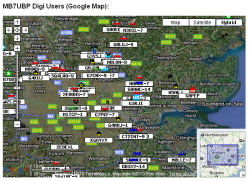
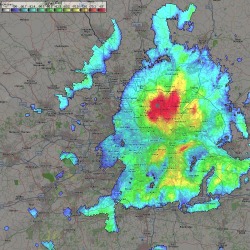
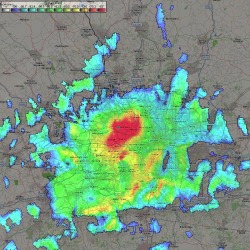
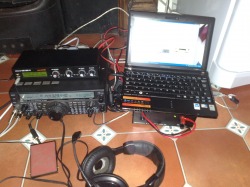
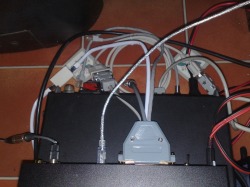
 RSS Feed
RSS Feed
